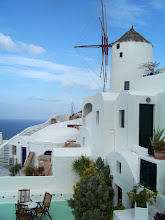 Being a North America native, sweetgum has been introduced to many parts of the world. In Gus van Sant's My Own Private Idaho, sweetgum ball is seen at a farm in Rome, where a native girl holds it in her hand and speaks out its beautiful Italian name.
Being a North America native, sweetgum has been introduced to many parts of the world. In Gus van Sant's My Own Private Idaho, sweetgum ball is seen at a farm in Rome, where a native girl holds it in her hand and speaks out its beautiful Italian name.
Pine cone, is the other major "victim" of my spraypaint. I love these small-sized cones gathering on a branch - just like dried flowers after being colored!

Now I need to find "greener" ways to color them :)















